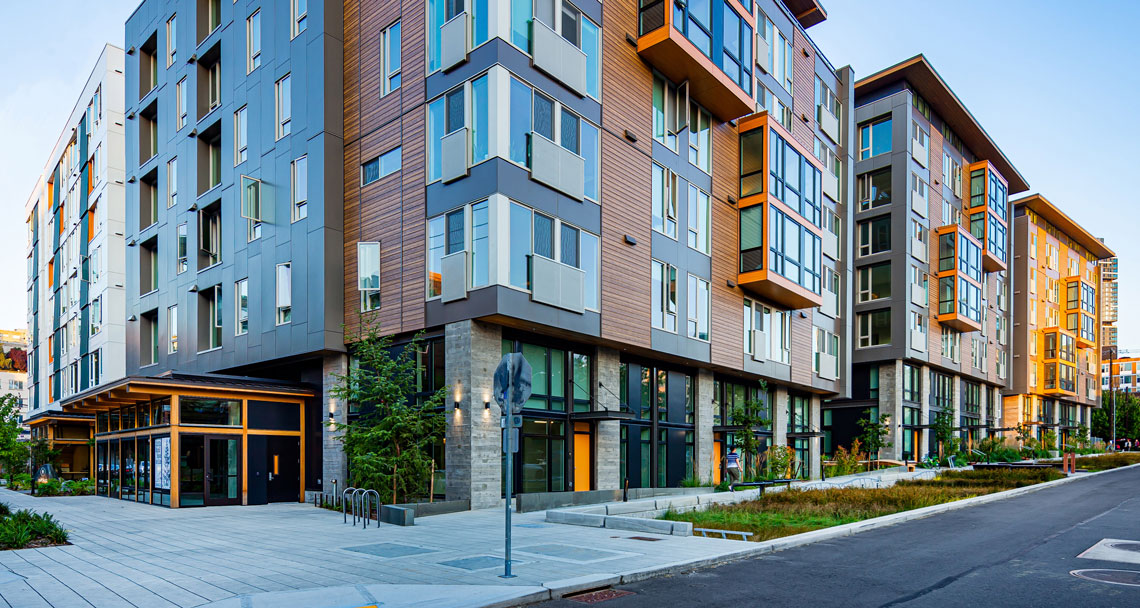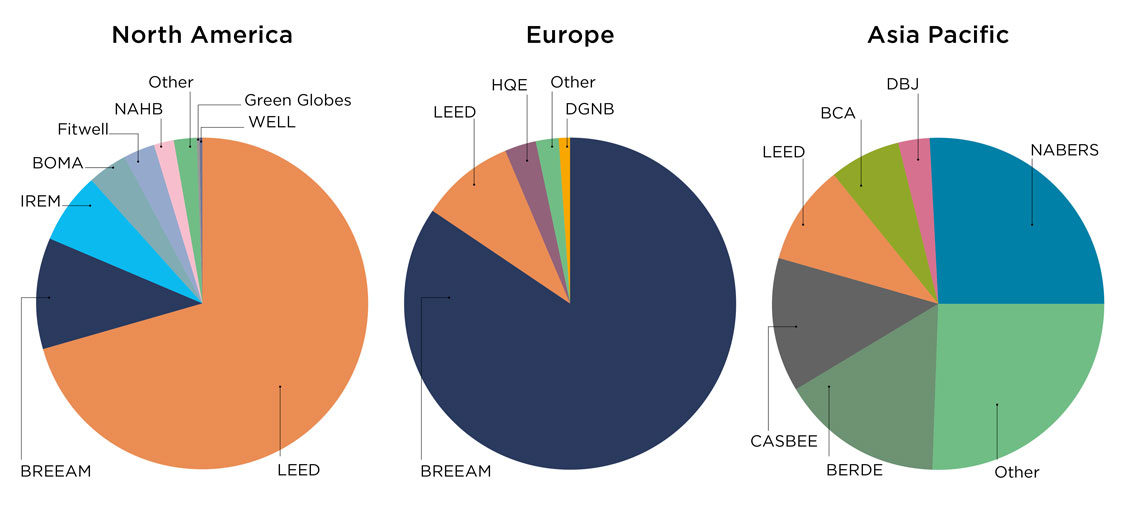Above: Sitka Apartments, Seattle, USA. LEED platinum-rated apartment project
Sustainability is an issue that must be considered by everyone in the real estate industry. However, delving deeper into the subject requires the understanding of seemingly endless terms and acronyms, especially when looking at the topic from a global perspective.
Sustainable buildings
Green building certifications are used to assess the sustainability credentials of individual buildings. Although the ratings are often voluntary, there are a number of reasons why developers and owners have their buildings certified, as Marta Schantz, Senior Vice President for ULI Greenprint Centre for Building Performance, explains.
“Demand for green building certifications is on the rise across the globe,” says Schantz. “Investors request that properties achieve them as a way to consistently measure sustainability across their funds. Occupiers gain improved productivity, health, happiness, and employee retention from green buildings, and certifications confirm those qualities in an asset. And local regulations increasingly align with green building certifications as a streamlined way to encourage sustainability throughout the jurisdiction.”
Organisations with operations across the globe must choose the most appropriate certification for their market and geography from the range of alternatives available. Many countries have their own ratings methods, while some certifications are international.
The green building certifications earned in 2018 for ULI Greenprint members’ properties demonstrate the wide range of certifications in the sector. Although the data is reliant on where their members have properties, the North American region demonstrates the diversity of options that are not based on language or country requirements.
Green building certifications earned in 2018 for ULI Greenprint members’ properties
Source: Savills Research using Greenprint, ULI
Rating tools vary in their approach and can differ depending on the sector. While this can be frustrating, there is logic to having different systems as countries and sectors will rank the priority of sustainability issues differently. For example, in the Middle East, water efficiency will be much more important than in Ireland. However, a unified building rating system that could be flexible for the local environment would help in the coordination of green buildings globally.
The three most internationally recognised certifications are LEED, BREEAM and WELL.
LEED
Leadership in Energy and Environmental Design (LEED) is for all building phases and types, including domestic and non-domestic. It started in the US but is used worldwide. Buildings can qualify for four levels of certification: certified, silver, gold, and the much-coveted platinum.
The system was developed by the US Green Building Council in 2000 and there are now more than 100,000 projects that have been LEED registered and certified in nearly 170 countries.
The US is, unsurprisingly, the largest market, accounting for 84% of certifications, followed by China, Canada, India and Saudi Arabia.
BREEAM
Building Research Establishment Global Environmental Assessment Method (BREEAM) is an international programme that started in the UK focusing on offices but now covers other sectors. Launched in 1990, it is one of the oldest rating systems. The rating can be used throughout the lifecycle of a building with different certification options covering BREEAM New Construction, BREEAM Refurbishment and BREEAM-in-Use.
The certification has a star rating from one to six and a designation of acceptable (In-Use scheme only), pass, good, very good, excellent or outstanding. BREEAM is used in 87 countries and has issued more than 590,000 certificates.
WELL
The relative newcomer on the block is the WELL Building Standard. It is slightly different to BREEAM and LEED as it focuses on wellness and the impact that buildings – and everything in them – can have on human health and wellbeing through 11 ‘concepts’: air, water, nourishment, light, movement, thermal comfort, sound, materials, mind, community and innovation.
It was launched in 2014 and is international and uses similar certification levels as LEED: bronze, silver, gold and platinum. There are around 4,500 projects that are applying for WELL across 62 countries. The US and the UK are the largest markets followed by China, Australia and France.
Sustainable portfolios
While individual building certifications are important, investors are also increasingly interested in the sustainability of their entire portfolio. This is important when in discussions with potential shareholders and investors and enables an organisation to assess its impact on the environment.
A popular solution in the real estate sector is the Global Real Estate Sustainability Benchmark, GRESB, which assesses and benchmarks the Environmental, Social and Governance (ESG) performance of real assets. It was founded in the Netherlands in 2009 by a large group of pension funds that wanted to have access to comparable and reliable data on the ESG performance of their investments.
It is now used across the globe and the number of participants has grown year on year. In 2019, more than 1,000 property companies, REITS, funds and developers participated in GRESB, representing over 100,000 assets and more than $4.5 trillion assets under management.
To find out more, please speak to our sustainability team.

